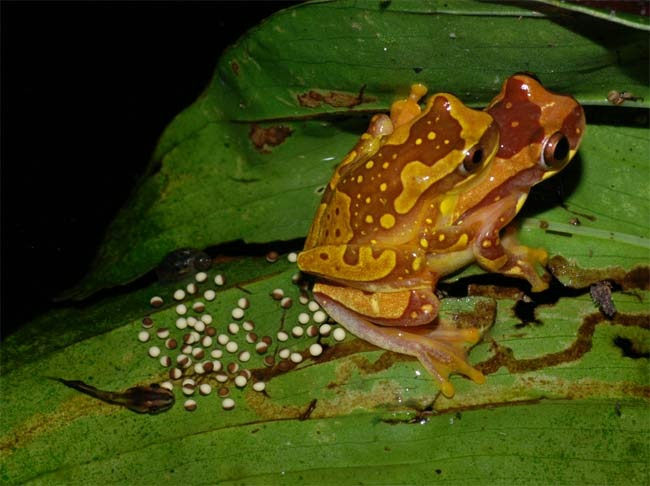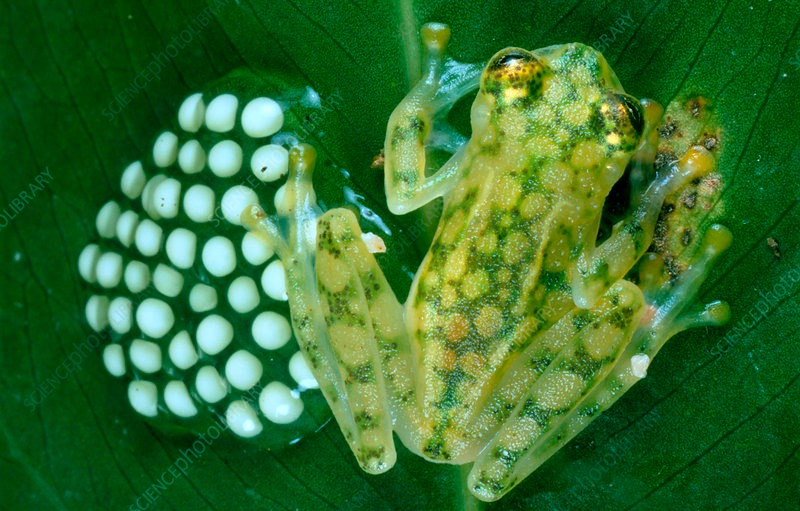Amphibians
Amphibian animals, such as frogs, and toads give birth in water. There is no hard shell on the eggs. Instead, they're arranged in a jello-like mass. Some tropical frogs lay their eggs in tiny pools of water trapped between plant leaves or in tree branches. The poison dart frog piggybacks its newly hatched tadpoles from the treetops to ground-level water sources. Their babies, known as larvae or tadpoles, live in the water, breathing through their gills and searching for food in the same way as fish do. Tadpoles acquire legs and lungs as they mature, allowing them to live on land.
All amphibians are predators of other animals, and they will frequently eat anything tiny enough to be swallowed whole. The majority of amphibians can only eat invertebrates, although larger amphibians will eat tiny fish, other amphibians, and even small mammals. Most amphibians reside in wetlands or forests on the ground, but others live in trees and a few species can survive in deserts and other dry environments.
Like reptiles, amphibians are cold-blooded. They need highly specialized living circumstances because of their unique skin. Their cells can be harmed by too much sun. A lot of wind can dry up an animal's skin and cause dehydration. Therefore, when their habitats are disrupted or contaminated with chemicals like weed killers, amphibians are the first to go extinct.












